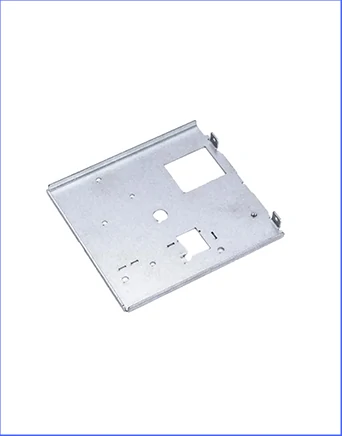Time to read: 6 min

Metal parts fabrication is a cornerstone of modern manufacturing, essential for creating components across various industries. This comprehensive guide delves into the definition, types, applications, and surface finishing options of metal fabrication, providing a clear understanding of this critical process.
Understanding Metal Fabrication
Metal fabrication encompasses a range of processes that transform raw metal into finished parts, including bending, cutting, assembling, shaping, and molding.
Types of Metal Materials
Metals are categorized into two main groups based on their hardness:
- Hard Metals: Composed of a metal matrix with hard materials, these metals are used in cutting tools and high-temperature applications.
- Soft Metals: Known for their low hardness, these metals reduce friction in mechanical components and improve wear resistance.
Manufacturing Metal Parts
Different metals require distinct manufacturing processes, each with its strengths and compatibilities.
CNC Machining
CNC machining is a computer-controlled process that removes material to achieve the desired part shape. It is ideal for low to medium complexity and volume, and includes CNC turning and milling.
Applications: Automotive, telecommunication, electrical, machinery, and electronics industries utilize CNC machined parts for components like bushings, shafts, and gearboxes.
Extrusion
Extrusion pushes heated metal through a die to form tubes or complex shapes, requiring post-finishing processes like drilling and machining.
Applications: Aerospace, automotive, window, railing, and flooring applications benefit from the smooth surface provided by extrusion.
Stamping
Stamping forms, bends, punches, and cuts metal sheets into desired forms, suitable for high-volume production with low unit costs.
Applications: Electronic, appliance, and automotive industries use stamping for high-volume parts like enclosures and chassis.
Forging
Forging uses compression forces to shape heated metal, producing stronger components than casting and machining, with less waste.
Applications: Automotive, surgical tools, electrical transmission, and general industrial equipment industries rely on forged components.
Casting
Casting involves pouring liquid metal into a mold, suitable for complex shapes and economical for large production runs.
Applications: Washing machines, metal pipes, and automobile components are commonly cast.
Metal Injection Molding
This process mixes metal powder with a binder, ideal for large volume production and cost-effective manufacturing.
Applications: Automotive, airplanes, medical equipment, and home appliance components are produced using metal injection molding.
Metal 3D Printing
3D printing uses laser technology for complex geometries and low-volume parts production, known for its ability to produce all-in-one assemblies and intricate parts.
Applications: Custom tools, specialized instruments, prototypes, housing, ductwork, and surgical implants are manufactured using 3D printing.
Surface Finish Options for Metal Parts
Surface finishing provides environmental protection, aesthetics, and improved features like surface roughness and corrosion resistance.
- Electroplating
- Electroless Plating
- Anodic Oxidation
- Chemical Treatment
- Vacuum Plating
- Hot Dipping
- Painting
- Thermal Spraying
Unofactory: Your Partner for Custom Metal Parts
Unofactory is a leading metal parts manufacturer equipped with modern technological equipment, offering innovative solutions for custom metal parts manufacturing.
Our team of veteran engineers combines experience and expertise to deliver high-quality metal parts at competitive prices, from prototyping to large volume production.
As an ISO 9001:2015 certified company, we guarantee quality and excellence in every product we deliver. Upload your CAD file to receive a market-competitive quotation and fast manufacturing lead time.
Conclusion
Metal is an indispensable material for numerous industries, and understanding the various fabrication options is essential for selecting the right manufacturing process. This guide provides insights into metal processing methods, helping you make informed decisions for your projects.




